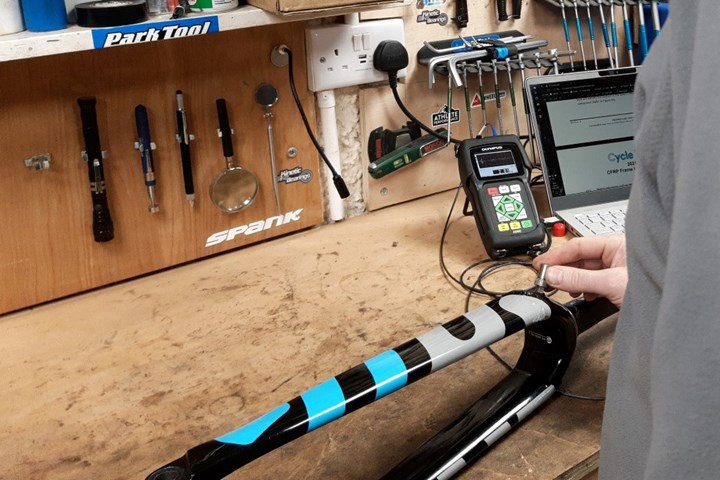Cycle Inspect, UNSW investigate carbon fiber bicycle damage
The collaborative research initiative will explore the prevalence and impact of structural damage in carbon fiber bicycles currently in use by the general public, assessing the magnitude of the issue and raising awareness.
Cycle Inspect (Sydney, Australia), a provider of cutting-edge training and technology solutions in nondestructive testing (NDT) for the bicycle industry, announces a collaborative research initiative with associate professor Soufiane Boufous and associate professor Julie Hatfield of the University of New South Wales’ (UNSW, Australia) Transport and Road Safety (TARS) Research Centre. This partnership will begin to explore the prevalence and impact of structural damage in carbon fiber bicycles currently in use by the general public.
Carbon fiber bicycles have gained immense popularity among cycling enthusiasts and professional athletes due to their lightweight, durable and high-performance nature. Ensuring their safety and reliability is of utmost importance; however, the prevalence and impacts of structural issues is not known. This joint research project, commencing in June 2023, aims to assess the magnitude of the issue and examine experiences of those impacted by some form of structural equipment failure. This initial phase will provide crucial insights that will underpin subsequent rounds of research by Cycle Inspect that will explore the condition of carbon fiber bicycles in “real-world” scenarios.
Dr. Boufous and Dr. Hatfield bring extensive expertise in areas such as injury epidemiology, injury prevention and psychology in the context of cycling and road safety to this research collaboration. Their previous work has included developing innovative methods of assessing the burden and risk factors of trauma, investigating psychological contributors to risky behavior and they have extensive experience in injury surveillance and record linkage of injury data.
“By combining our expertise as the industry’s first data-driven training and technology solution for bicycle industry professionals in the area of NDT with UNSW’s in-depth knowledge of injury epidemiology, we hope to raise awareness of the extent of the issue,” Dr. Andrew Novak, data and research lead at Cycle Inspect, says. “Ultimately, this research will benefit cyclists around the world, empowering them to make responsible decisions that ensure equipment longevity.”
The findings of this collaborative research project will be published via Cycle Inspect’s website and offered to cycling publications (consumer and trade) in conjunction with leading academic journals. The insights gained from the research will also inform additional phases of Cycle Inspect’s research, specifically the evaluation of carbon fiber bicycles currently in use by the general public; the analysis of the broader health and financial impacts and risks related to structural failures of carbon fiber bicycle frames and components; and the correlation between various forms of visible and underlying damage (sustained via impact, manufacturing processes) and failure risk.
Cycle Inspect seeks to raise awareness of the risks associated to buying, selling, and using damaged or defective equipment; whilst providing bicycle industry professionals (mechanics, repairers, painters, builders and more) and aligned industries (such as specialty bicycle insurers) with the skills, knowledge and technology to make informed decisions regarding the safety of their customers.
Related Content
-
Materials & Processes: Composites fibers and resins
Compared to legacy materials like steel, aluminum, iron and titanium, composites are still coming of age, and only just now are being better understood by design and manufacturing engineers. However, composites’ physical properties — combined with unbeatable light weight — make them undeniably attractive.
-
Materials & Processes: Resin matrices for composites
The matrix binds the fiber reinforcement, gives the composite component its shape and determines its surface quality. A composite matrix may be a polymer, ceramic, metal or carbon. Here’s a guide to selection.
-
Materials & Processes: Fibers for composites
The structural properties of composite materials are derived primarily from the fiber reinforcement. Fiber types, their manufacture, their uses and the end-market applications in which they find most use are described.

















